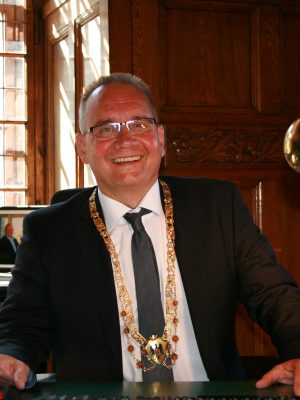Quedlinburg, Germany
General Information
Administrative status
City of Saxony-Anhalt
Collegiate Church, Castle, and old Town of Quedlinburg
Registration Year
1994
Historical function
Imperial capital and trading centre
Location and site
In north central Germany, at the edge of the Harz massif, Quedlinburg was constructed on the Bode River; the site also includes two overhanging hills.
Urban morphology
Moats follow the irregular contours of the fortification wall, which has been partially preserved. Narrow, tortuous lanes in the old part of the city, which dates to the 10th century, and a uniform plan in its newer part, constructed in the 12th century, make up the medieval layout. The centre of the old city is near the main square, known as the “Markt.” The hill on which the castle is built, with the buildings that surround it, make up the original nucleus of the city.
Monuments of Romanesque, Gothic, Renaissance and Baroque styling are sprinkled throughout the architectural landscape. The Saint Servatius Collegiate Church, constructed between the 10th and 12th centuries, constitutes an important work. Numerous half-timber houses dating from the 15th to the 17th centuries, often very elaborate, follow the city’s curved streets and border its squares.
Registration criteria
Criterion (iv): Quedlinburg is an outstanding example of a European town with medieval foundations, which has preserved a high proportion of timber-framed buildings of exceptional quality.
Historical reference
- King Henry I (the Fowler), who reigned from 919-936, erected a castle on the flank of one of the two hills of Quedlinburg. His royal residence became the capital of Franconia, in the Kingdom of Germania.
- In 936 Otto the Great founded the Saint Servatius Collegiate Church on the summit of the same hill; the influence of this collegiate church spread throughout the kingdom, and then the empire. A Benedictine monastery was erected on the second hill. Crowned “Emperor and Augustus” by Pope John XII in 962, Otto the Great restored the empire of Charlemagne, which became known as the Holy Roman Empire a few centuries later.
- In 994, Quedlinburg obtained its letters of franchise (which were renewed in 1040 and 1134); this allowed the city to carry out trade between the North Sea and the Alps. Its growth was rapid.
- In the 12th century, a new area of Quedlinburg began to be developed near the east shore of the Bode River. A wall was built to enclose the two parts of the city in 1330.
- Quedlinburg became a member of the Alliance of the Cities of Lower Saxony in 1384, then a member of the Hanseatic League in 1426. It played an important role in these alliances before it lost its trading privileges in 1477. Its economic and artistic importance increased nonetheless, and new forms of half-timber houses appeared in the 16th and 17th centuries.
- The 17th century was disastrous for Saxony. In 1698, the protectorate of Quedlinburg was sold to the electorate of Brandenburg, which had already expanded to include the Duchy of Prussia in 1618. After the secularisation of the imperial foundation, it was incorporated into the Kingdom of Prussia in 1802.
Photos

News
17 July 2015
New brochure about 20 years World Heritage Quedlinburg
Quedlinburg, Germany
Northwest Europe and North America
11 March 2015
Quedlinburg publishes its “Cry-Out for Help” in English
Quedlinburg, Germany
Northwest Europe and North America
11 February 2015
Quedlinburg’s World Heritage Management Plan available in English
Quedlinburg, Germany
Northwest Europe and North America
4 February 2014
Regional Conference of North-West Europe at13/14 November in Quedlinburg
Quedlinburg, Germany
Northwest Europe and North America
Contact

Mr. Frank Ruch
Lord Mayor of Quedlinburg
City of Quedlinburg
Markt 1
Quedlinburg, Germany
6484
+49 3946 905 50
stadt@quedlinburg.de
Ms. Katrin Kaltschmidt
World Heritage Coordinator
City of Quedlinburg
Markt 1
Quedlinburg, Germany
6484
493 946 905 712
katrin.kaltschmidt@quedlinburg.de




